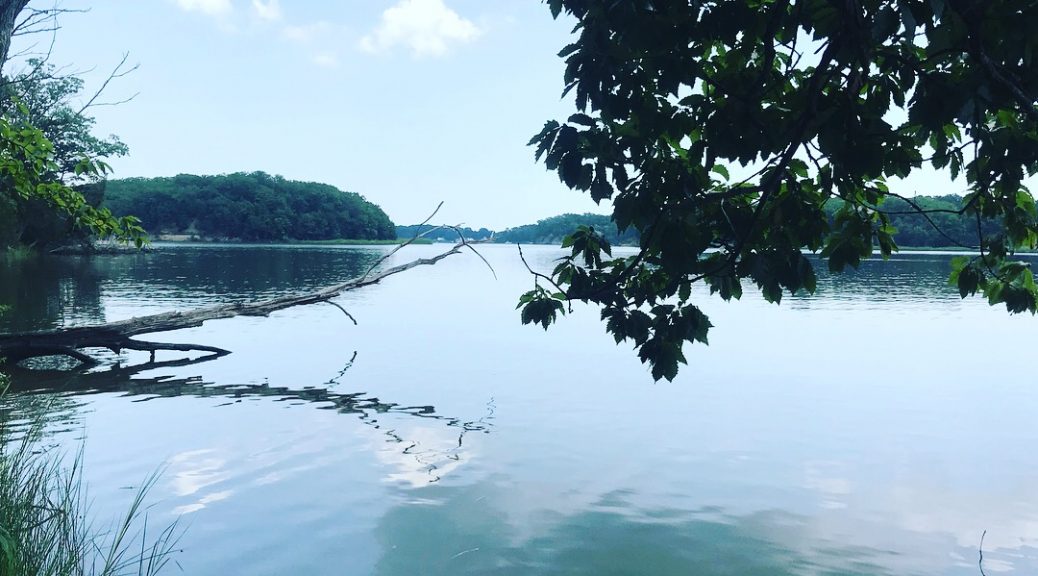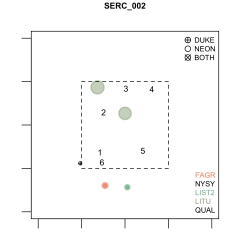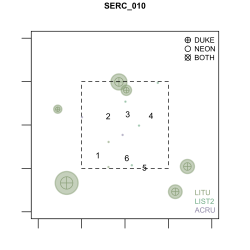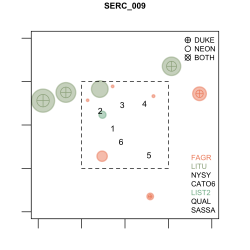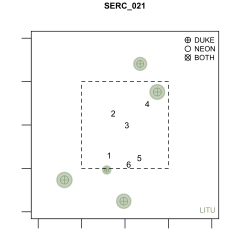Smithsonian Environmental Research Center (SERC)
76.534 W, 38.869 N
seed trap establishment: August 2018
Jordan Luongo, Lane Scher
seed collection and crop count:
March 2019: Jordan Luongo, Samantha Sutton
June 2019: Samantha Sutton, Shubhi Sharma, Maggie Swift
March 2020: Jordan Luongo, Samantha Sutton
Smithsonian Environmental Research Center is located south of Annapolis, MA. Formally farmland, this coastal plain forest sits on the western shore of the Chesapeake bay. The 1070-ha site is operated by the Smithsonian Institute. Sampling at the SERC NEON site was facilitated by Jim Coloso at NEON and Ashley Landes, field technician. Seed traps were installed at nine of the NEON plots.
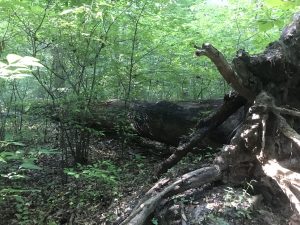
Plot 1 lies between an open crop field and the Chesapeake Bay. This open hardwood stand is dominated by Liquidambar styraciflua and Liriodendron tulipfera, with Acer spp., Ulmus spp., Microstegium and vines.
Plot 9 is an old growth mixed hardwood stand located on a hillslope. This stand is dominated by large L. tulipfera, Carya tomentosa, Fagus grandifolia, Sassafras spp. and Nyssa sylvatica. Large canopy gaps are associated with recent treefalls.

Plot 21 is located in a riparian bottomland adjacent to a creek. This semi open stand is dominated by large L. tulipfera. and a mid story of F. grandifolia, not yet mature.
Plot 2 is downstream from plot 21. The understory is a dense thicket of Lindera benzoin and Berberis thunbergii. Quercus alba and L. tulipfera occupy the open canopy.
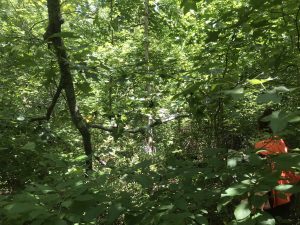
Plot 6 is an open stand beside Chesapeake Bay dominated by L. tulipfera, Prunus serotina and Quercus spp. It has a dense ground cover 1-m tall L. benzoin. Dense lianas include Vitis spp., Parthenocissus quinquefolia, and Toxicodendron radicans that extend into the canopy.
Plot 3 is in a bottomland near a large hay field. The canopy is sparse, dominated by L. styraciflua with a few F. grandifolia and N. sylvatica trees. The gaps in the canopy have allowed a dense growth of brambles and Microstegium, that have formed mounds on top of engulfed trees in the center of the plot.
Plot 16 occupies a hillslope near the same field. The canopy is dominated by L. styraciflua and L. tulipfera. With the exception of L. styraciflua seedlings that receive filtered light through a small canopy gap on the east side of the plot that understory is sparse.

Plot 10 includes large L. tulipfera trees with intermediate L. styraciflua trees. The under story has dense briar patches.
Plot 22 occupies a knoll in the middle of a gap. The site is dominated by mature Ailanthus altissima and Sassafrass sp. The under story is a tangle of downed trees, briars, L. benzoin and A. altissima seedlings.

